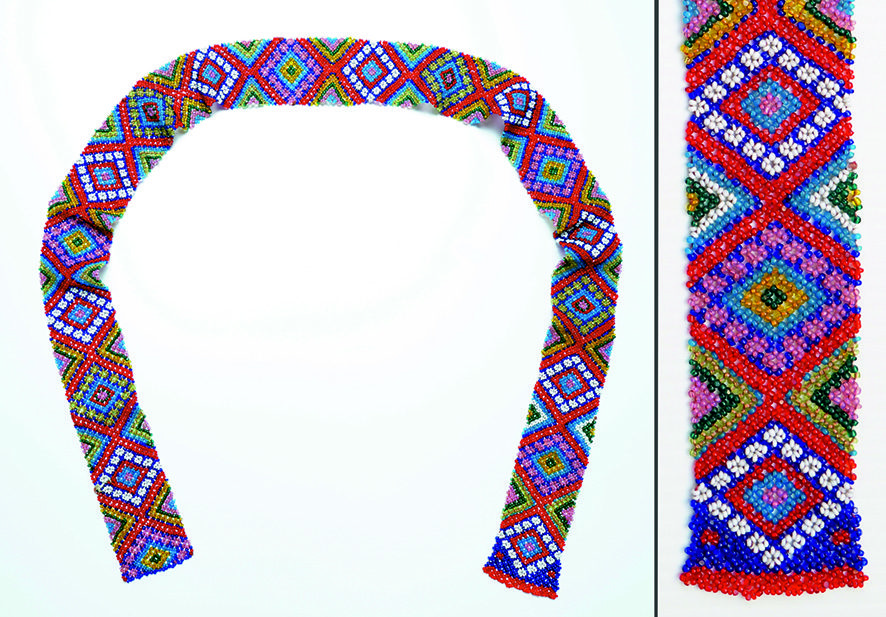
100 years – 100 artefacts
The object that we propose for you this week is a belt/belt ornament that, in the ethnographic area of origin, has the folk name of “lătițar” and it was part of women’s clothing from Woodsmen Land (Lelese, Hunedoara). The beads which form “latițar” are made of glass and they were purchased at country fairs, usually at those that coincided with folk parties (“nedei”), from Slovak itinerant merchants (“vengeri”) or their intermediaries.
After the disappearance of this form of import and when in Banat had ceased the fashion for narrow belts (“brăcire”) made of beads in different colors embroidered and applied to strips of silk or velvet, the woodsmen bought old narrow belts from Banat women, in order to disassemble them and recover the materials needed for sewing “lătițar”. “Lătițar” in the image is made of very fine, vividly colored beads, with thin holes and equal shapes, the white ones being perfectly round and the colored ones with polished flat facets that create a refined reflection of light. Beads are strung on strong but thin enough threads which can pass through the needle and the needle through the beads.
The decorative motif is simple, consisting of a series of frieze rhombuses of red beads whose main content is followed by successions of blue, white, pink, ocher and green beads, creating a geometric motif of great visual impact. The artifact with inventory no. 268 entered the museum’s patrimony in 1923 and is 70-cm long and 3-cm wide.
Text: Anca Mocan – MET museographer
Photo: George Ciupag – MET photo-video museographer



